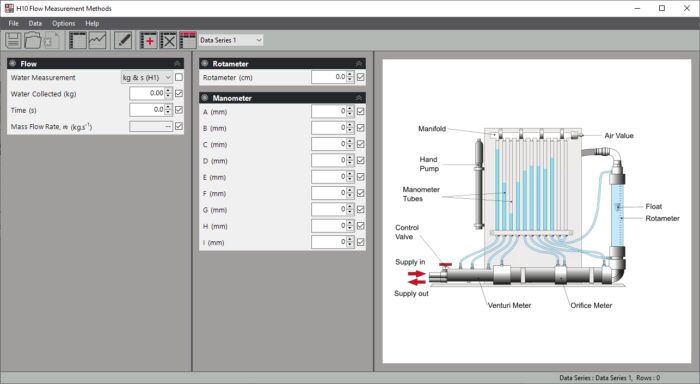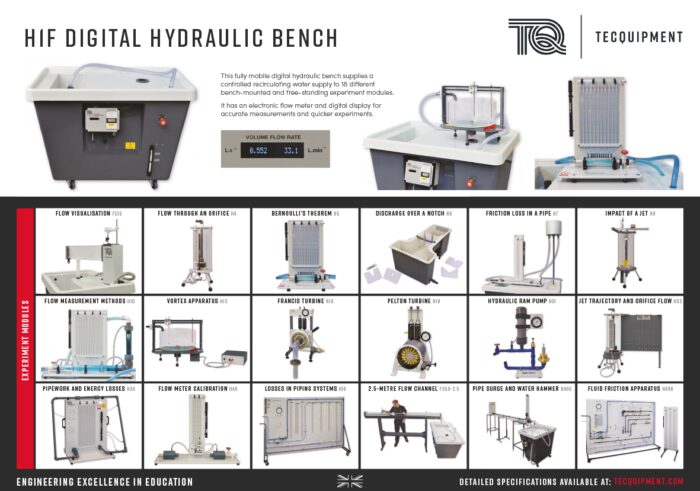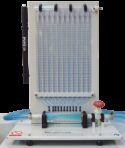Experiment
H10
FLOW MEASUREMENT METHODS
Investigates different ways of measuring flow including a Venturi meter, an orifice plate and a rotameter. At the same time shows applications of the steady flow energy equation (Bernoulli's equation).
If you have any questions or you'd like to discuss a product, please call us.
+44 1159 722 611FLOW MEASUREMENT METHODS
TecQuipment’s Flow Measurement apparatus shows the typical methods of measuring the flow of an essentially incompressible fluid (water). It also shows applications of Bernoulli’s equation.
Students measure flow using a Venturi meter, an orifice plate meter and a rotameter. Bernoulli’s equation works for each meter. Students find and compare the head losses for each meter. They also find the losses in a rapid enlargement and a 90-degree elbow.
The apparatus is for use with TecQuipment’s Hydraulic Bench (H1F, available separately).
The product has a horizontal pipe that includes a Venturi meter, orifice plate and pressure tappings. An elbow connects the pipe to a rotameter (gap-type flow meter) with further pressure tappings. All pressure tappings connect to manometers held on a vertical panel behind the pipe work. The manometers measure and show pressure distribution against a calibrated scale. To perform experiments, students connect the product to the hydraulic bench supply, and set it to a low, steady flow through the apparatus.
Water from the hydraulic bench then flows through the Venturi meter, through a sudden enlargement, a settling length and the orifice plate. It then flows around the elbow, through the rotameter, then a flow control valve, finally returning to the hydraulic bench. The control valve is downstream, so it does not cause any upstream turbulence.
To adjust the datum water level in the manometer tubes, students connect a hand-pump (included) to the valve above the manometer tubes.
Students measure the flow using the hydraulic bench, noting the manometer levels and rotameter reading. They then increase the flow in set increments, taking readings each time, until reaching maximum flow rate. They then use Bernoulli’s equation to find mass flow rate through each of the meters, comparing to flow rates measured using the hydraulic bench. Students can compare advantages, disadvantages and potential applications of each meter.
Learning outcomes
- Application of the Bernoulli equation for incompressible fluids
- Direct comparison of flow measurement using a Venturi meter, orifice plate and rotameter
- Comparison of pressure drops across each flow measurement device
- Comparison of pressure drops across a sudden enlargement and a 90° elbow






















